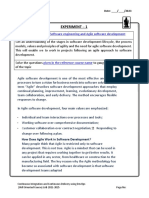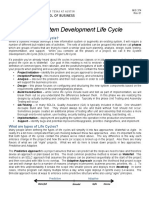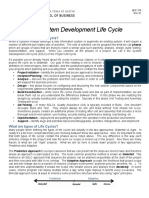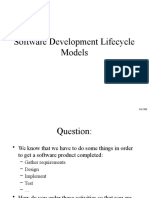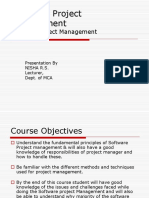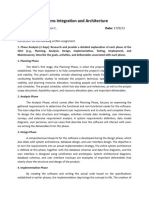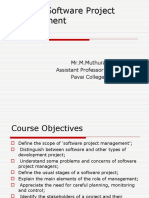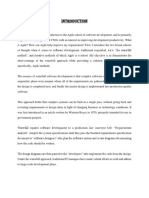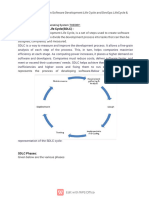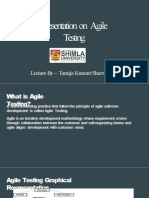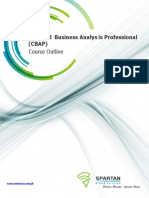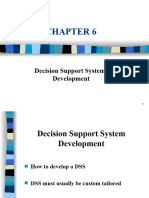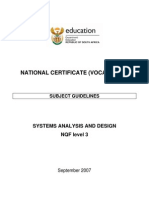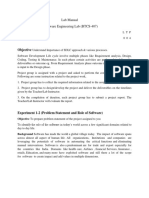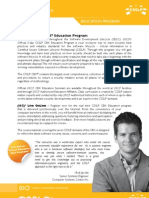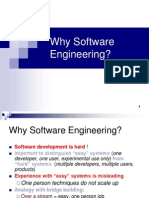0% found this document useful (0 votes)
28 views6 pages1.software Development
Here are definitions for the terms in context:
Product roadmaps - Plans that layout the future direction and features of a product across multiple releases or iterations.
Life cycle - The series of phases a product goes through from initiation to retirement, such as planning, analysis, design, implementation, testing, deployment, maintenance.
Phased approach - Breaking a project into distinct stages or phases with clear start and end points to better manage complexity.
Milestones - Important points in a project plan that signify completion of a major deliverable or stage.
Iterative approach - An incremental process of repeatedly improving a product or system through cycles of testing, evaluation and implementation.
Sprint - A short, timed iteration
Uploaded by
Ana Pociello SamperizCopyright
© © All Rights Reserved
We take content rights seriously. If you suspect this is your content, claim it here.
Available Formats
Download as DOCX, PDF, TXT or read online on Scribd
0% found this document useful (0 votes)
28 views6 pages1.software Development
Here are definitions for the terms in context:
Product roadmaps - Plans that layout the future direction and features of a product across multiple releases or iterations.
Life cycle - The series of phases a product goes through from initiation to retirement, such as planning, analysis, design, implementation, testing, deployment, maintenance.
Phased approach - Breaking a project into distinct stages or phases with clear start and end points to better manage complexity.
Milestones - Important points in a project plan that signify completion of a major deliverable or stage.
Iterative approach - An incremental process of repeatedly improving a product or system through cycles of testing, evaluation and implementation.
Sprint - A short, timed iteration
Uploaded by
Ana Pociello SamperizCopyright
© © All Rights Reserved
We take content rights seriously. If you suspect this is your content, claim it here.
Available Formats
Download as DOCX, PDF, TXT or read online on Scribd
/ 6

